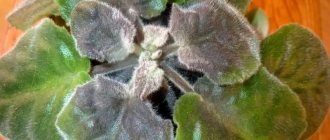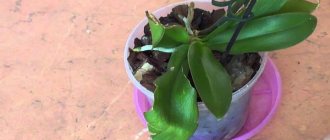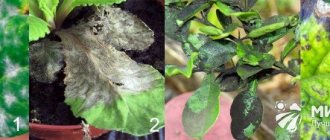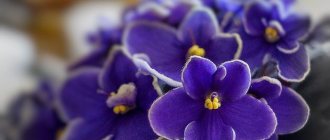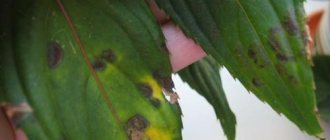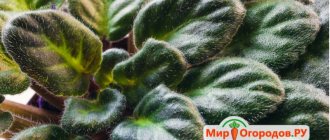Indoor plants are used to decorate a home or liven up the interior. Often these are violets. Saintpaulias, as botanists call them, are very beautiful, but vulnerable, requiring special care and increased attention. Diseases and pests that appear due to improper living conditions are considered especially dangerous. Diseases of violets can be determined by the appearance of the plant. The pattern of changes in the color and shape of leaves, flowers and root systems can indicate a specific problem. The list of infections and pests is huge, so sometimes it is difficult to determine the cause.
General characteristics of the plant
Violet has an attractive appearance. A small bush will not take up much space, and the flowering process will surprise you with its diversity. More detailed description of Saintpaulia:
- bush 10-15 cm high;
- the rosette consists of several tiers of green leaves that are fluffy to the touch;
- the frill of the plate is jagged, the color ranges from dark green to light green;
Sick violet
- leaf diameter can range from 2 cm to 10 cm;
- at the moment of flowering, a peduncle appears, at the top of which an inflorescence of several buds is formed;
- The color scheme of the buds can be varied. The shape, size and texture of the petals are individual for each variety.
During the development, growth and flowering process, various problems may appear. Usually this is a deterioration in the appearance of the plant. In extreme cases, the flower may even die. There are many reasons - diseases, infections, pests.
External characteristics of the plant
Why do violet leaves turn yellow?
Wick watering of violets - how to do it yourself
A problem arises with the above-ground part of the plant, in particular, the leaves change color. There are several reasons why violet leaves turn yellow:
- frequent watering;
- incorrectly selected substrate;
- lack of nutrients in the soil;
- inappropriate place to place the flowerpot;
- natural change of leaf cover;
- the need for replanting due to aging of the flower;
- leaves may lighten and then turn yellow - this is a sign of an incorrect degree of illumination.
The leaves have turned yellow
To correct the situation, it is enough to change the location of the flowerpot, replant, and normalize the watering regime.
Preventive actions
Unfortunately, violets, like any plant, are susceptible to diseases. And it is always easier to prevent a disease than to treat it. In order to avoid many troubles, follow a few recommendations :
- Place only purchased plants in quarantine for 1-1.5 months;
- Increased immunity;
- Start treatment as early as possible;
- Disinfect all purchased material: Soil;
- Pots;
- Inventory.
It is necessary to properly care for violets to avoid further consequences.
Why do leaves curl inward?
The best varieties of violets - varieties with names
It happens that violet leaves curl for unknown reasons. This problem can cause the death of the flower. Why do violet leaves curl inward during the development of Saintpaulia:
- excess nutrients in the substrate;
- too frequent watering;
- pests that have settled under the leaf;
- incorrect transplantation of the sprout;
- inappropriate level of lighting.
The leaves are curling
In order for the leaf plate to stop deforming, you need to take a close look at the plant and adjust the maintenance conditions.
Proper care
Why do geranium leaves turn yellow at home - causes and treatment
Proper care of Saintpaulias is the key to success. If you follow all the recommendations of professionals, you can be sure that the flower will grow and develop.
Lush violets
Basic provisions that must be observed at different stages of flower development
- At the very beginning, after purchasing a violet, it must be quarantined for two weeks in a separate room.
- At the stage of the beginning of vegetative development after a period of rest, fertilizing with nitrogenous fertilizers is necessary.
- During the period of bud formation and flowering, potassium-phosphorus fertilizers will come to the rescue.
- During the flowering period, it is necessary to remove fading buds and flowers.
Regardless of the stage of development, wick watering is recommended for all violets. Fertilizers are also added to the soil in the same way.
Leaves become covered with spots: reasons
Pots for violets - finding the perfect option
Sometimes spots of different colors appear on the plates, which can be located along the entire perimeter of the above-ground part of the plant. This appears very often in indoor specimens.
For your information! To understand the cause of the stains, you need to examine them through a magnifying glass. Sometimes Saintpaulia signals in this way to some external stimuli.
Spots on violet leaves can appear for many reasons:
- the plate may become covered with brown spots, which are the result of exposure to direct sunlight. These are burns;
- in those places where drops of water fall on the leaves, the surface may darken and then acquire a different color;
- if the pot is in a draft, dark formations will appear on the foliage.
Leaves with spots
Removing damaged parts can save the plant from imminent death.
Incorrect lighting
When a violet is exposed to sunlight for a long time, the plant gets burned. The appearance of rounded brown spots on the leaf may indicate a burn.
It is easy to understand that this is the reason: brown spots will appear on the side of the window.
In addition, the spots sometimes turn black. The formation of holes in the sheet is not uncommon. In this case, there is no need to treat the plant. You should cut off the affected leaf and observe the plant for several days.
What does it mean if violet leaves become limp?
A situation can become dangerous for the life of a flower when the stem begins to lose its elasticity, and the above-ground part of an indoor flower suddenly becomes sluggish. There may be several reasons for this decline:
- untreated sections have a fungal infection;
- serious mechanical damage;
- the appearance of pests that feed on Saintpaulia juice;
- incorrect temperature regime for the plant;
- diseases late blight and fusarium, which are characterized by rust-colored spots.
Note ! If the plant has recently been replanted, the cause may be burnt to the plant root by fertilizers added to the soil. In this case, it is impossible to save Saintpaulia.
The leaves have wilted
The question often arises when a violet has limp leaves, what to do to resuscitate the plant. The best solution would be transplantation. At the time of removing the sprout, all parts of the root and above-ground system can be examined. Remove the soft parts and transplant the rest of the seedling into a new container.
Why do the leaves become covered with a white coating like flour?
White bloom on violets is common, since the disease that affects the plant is very common. A coating appears on the leaves, which from a distance looks like flour sprinkled on greens. This is powdery mildew. Reasons for its appearance:
- high indoor humidity;
- incorrect temperature in the room;
- excessive watering;
- poor care of indoor flowers;
- the presence of infected plants within a radius of several meters. Even touching edges can transmit the disease to a healthy specimen.
Powdery mildew
Note! First, plaque covers the lower tiers, so it is sometimes difficult to identify the problem in time.
If the violet fades, what diseases could be the cause?
If first the leaves of the violet turn yellow, and then the whole bush begins to wither, then the problem may lie in improper watering, the location of the flowerpot, or fertilizing the soil. If there are no visible reasons for withering, then the cause may be a disease:
- fungus;
- rotting of the root system;
- bacteriosis;
- late blight;
- fusarium;
- gray rot.
It all depends on the primary state of the flower. The plant does not always die due to disease, since treatment can be carried out in time.
Disease prevention measures and their treatment
In order not to bring the violet to a critical state, it is advisable to carry out periodic preventive maintenance. It is associated with the normalization of conditions for breeding Saintpaulia. You can get rid of diseases and pests by using special means for disinfecting the soil and the plants themselves.
Disease Prevention
The fight may involve simply replanting the specimen.
Bacteriosis
Yellowing and wilting of the plant can occur due to bacteriosis. The disease is quite common and can negatively affect the condition of the bush. Bacteria can rise from the soil that is in the pot. Sometimes germs come from other indoor plants. Treatment consists of normalizing plant care.
Powdery mildew
If the leaves begin to turn white, resembling a powder of flour, then signs of a fungal infection are showing. To prevent the appearance of powdery mildew, you need to wipe the flowerpot and tray, fluff the soil in the pot, and do not reduce the room temperature to 18 ° C.
If powdery mildew occurs on violets, how to deal with the problem at home? Treat the above-ground part of the plant with benlat or foundationol fungicide. At first, the fungal infection will become pale in color, and over time it will disappear completely.
Gray rot
In this case, the infection rises from the soil - there are spores of pathogenic fungi in the soil. To prevent microorganisms from becoming more active, it is necessary to carry out preventive measures: maintain normal temperature, humidity, and organize watering according to schedule.
Gray rot
As the disease develops, you can see a gray coating, rosettes extended from the center, which then begin to turn black. You need to calcinate or freeze the soil from the pot, treat the roots with a fungicide and replant the Saintpaulia.
Root rot
If the plant has raised a rosette with leaves up, then the problem is in the soil. If the soil loses acidity, there is a risk of root rot. During the development and growth of a fungal disease in the substrate, the disease rises higher, affecting the above-ground part.
To get rid of root rot, you need to transplant the Saintpaulia into another container with a new substrate. In addition, it is worth pre-trimming the damaged areas and rinsing the root in a special disinfectant solution.
Fungal diseases
Yellow, transparent and brown spots on violet leaves are a manifestation of fungal diseases that have affected the violet. Subsequently, secondary symptoms may occur: the stem and the rest of the above-ground part begin to dry out, then the plant dies and dies.
You need to carefully monitor the bush of your indoor plant. It is necessary to use special disinfectants and auxiliary substances. Any light spot should be carefully examined for the presence of parasites.
Fusarium
If watery spots appear on the edges of the leaves, then the plant is infected with a fungal spore of Fusarium. In this case, it is useless to treat Saintpaulia - the flower will die.
Important! In order not to infect other specimens, you need to throw away the pot along with the soil and the dead sprout.
Downy mildew
Downy mildew on violets appears almost the same as regular mildew. The only difference is the presence of brown and light green spots on the leaves and trunk of the plant. A false variant of the disease is treated in the same way as a standard problem.
Other diseases
Saintpaulias are very sensitive, therefore susceptible to various types of diseases. In addition, a bush with flowers can be affected by pests. These can be dust mites, spider mites, scale insects, and caterpillars.
Saintpaulias are very beautiful and elegant, but can deteriorate and fade over time. The reason for this is diseases and pests. Each disease has its own causes, but all of them are mainly associated with improper care and poor living conditions. Treatment is different in each case and requires an individual approach.
Reminder for a newbie!
Uzambara (Uzumbar) violet is a plant of the Gesneriaceae family, growing in the natural environment of tropical and subtropical regions of Asia, Africa, Eastern Australia, South America and the Indian Ocean islands.
Saintpaulia is a plant named after the Saint-Paul father and son, who brought a plant unknown to Europeans from the Uzambara district (modern Tanzania) in the 19th century, presented for the first time at the international flower exhibition in Ghent in 1893.
Indoor violet has been one of the most popular plants in indoor floriculture since 1927. By 1949, more than 100 varieties had been bred, and today their number exceeds several thousand.
Rooting
- possibly in water, in substrate, moss.
Priming
- purchased soil or a mixture of leaf, coniferous, turf and peat soil in a ratio of 3:1:2:1 with the addition of raising agents (perlite, vermiculite, river sand, crushed sphagnum moss.
Lighting - it is best to place flower pots on western or eastern windows. To ensure that the plant is evenly illuminated from all sides, the pots are periodically rotated. In winter, when daylight hours decrease, you can use artificial lighting - fluorescent lamps.
Caring is a real art and serious painstaking work at the same time, including watering, fertilizing, and creating a favorable humid climate. Water Saintpaulias as the soil dries. The soil must be moistened regularly, but excess moisture should not stagnate in the roots. When watering, you must ensure that water does not get on the leaves. You cannot water the Uzambara violet with cold water. Fertilizing is done with complex mineral fertilizer once every two weeks. Saintpaulia reacts negatively to a lack of nitrogen in the soil. Optimal air humidity is approximately 50%, temperature is 20-22 ° C, without sudden fluctuations and drafts. The leaves of the plant should not touch the window glass. Removal of faded flowers and damaged leaves is carried out regularly.
Reproduction - planting a leaf cutting, part of a leaf, or a daughter rosette. The most popular method is rooting leaf cuttings. The formation of roots and the development of children lasts 4-8 weeks.
Pests are one of the gardener's problems. There are many different types of pests and it is very difficult to classify them. Among Saintpaulia pests, several groups can be distinguished: mites (spider mites, flat mites, transparent mites, etc.), insects (aphids, thrips, springtails, poduras, scale insects, whiteflies, scale insects, etc.), worms (nematodes).
Diseases - distinguish between infectious (gray rot, powdery mildew) and non-infectious diseases (rotting of the stem and root, wilting of the lower leaves, yellowing, leaf spotting, incomplete opening and premature drying, falling of flowers) of plants. The causative agents of infectious diseases are bacteria, fungi, and viruses. To prevent infectious diseases, you should strictly observe the regimes of watering, temperature, humidity, and lighting. Non-communicable diseases usually arise due to poor agricultural practices. They may appear in one instance and not spread to others.
